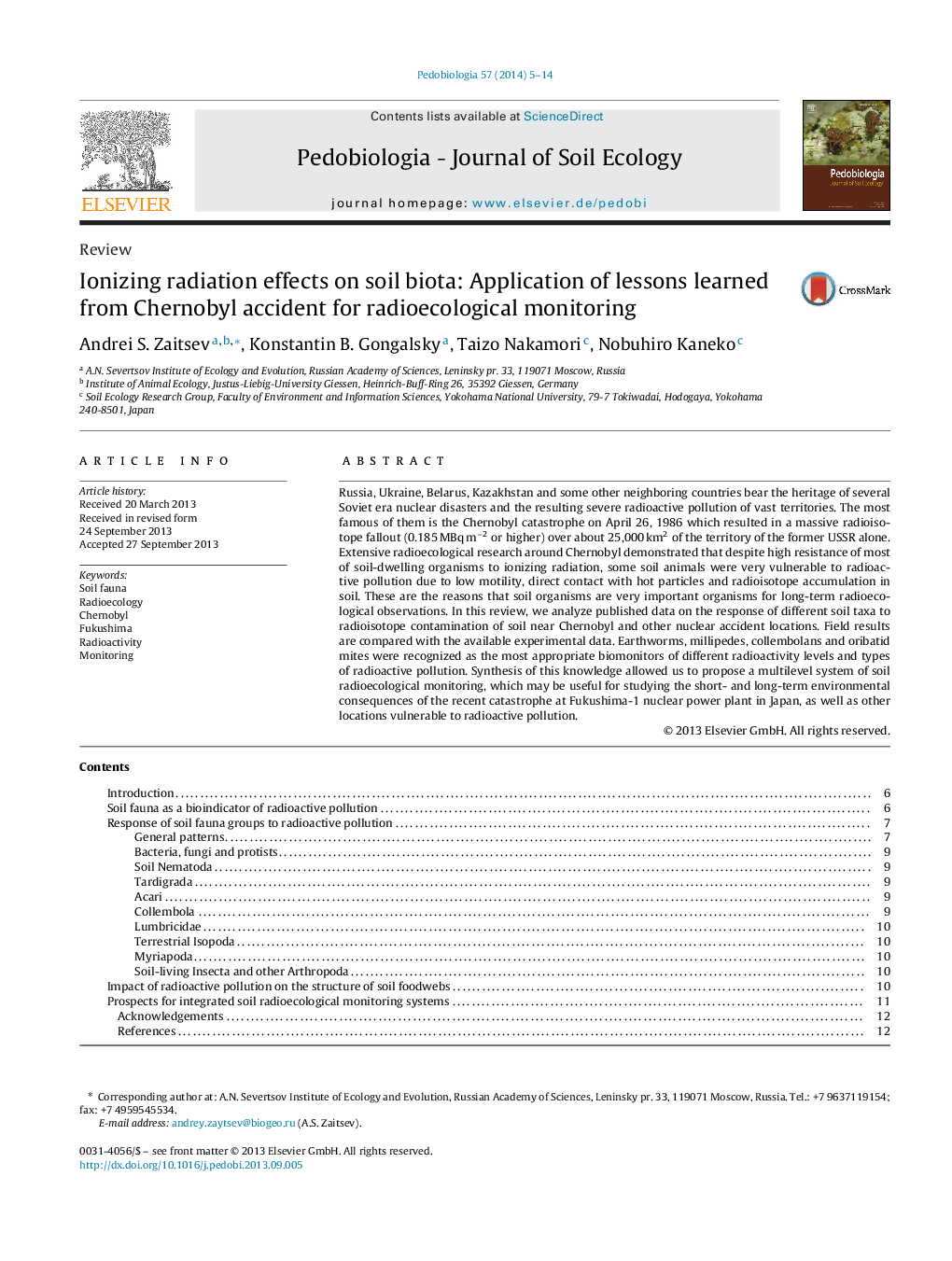| Article ID | Journal | Published Year | Pages | File Type |
|---|---|---|---|---|
| 2061028 | Pedobiologia | 2014 | 10 Pages |
Russia, Ukraine, Belarus, Kazakhstan and some other neighboring countries bear the heritage of several Soviet era nuclear disasters and the resulting severe radioactive pollution of vast territories. The most famous of them is the Chernobyl catastrophe on April 26, 1986 which resulted in a massive radioisotope fallout (0.185 MBq m−2 or higher) over about 25,000 km2 of the territory of the former USSR alone. Extensive radioecological research around Chernobyl demonstrated that despite high resistance of most of soil-dwelling organisms to ionizing radiation, some soil animals were very vulnerable to radioactive pollution due to low motility, direct contact with hot particles and radioisotope accumulation in soil. These are the reasons that soil organisms are very important organisms for long-term radioecological observations. In this review, we analyze published data on the response of different soil taxa to radioisotope contamination of soil near Chernobyl and other nuclear accident locations. Field results are compared with the available experimental data. Earthworms, millipedes, collembolans and oribatid mites were recognized as the most appropriate biomonitors of different radioactivity levels and types of radioactive pollution. Synthesis of this knowledge allowed us to propose a multilevel system of soil radioecological monitoring, which may be useful for studying the short- and long-term environmental consequences of the recent catastrophe at Fukushima-1 nuclear power plant in Japan, as well as other locations vulnerable to radioactive pollution.
